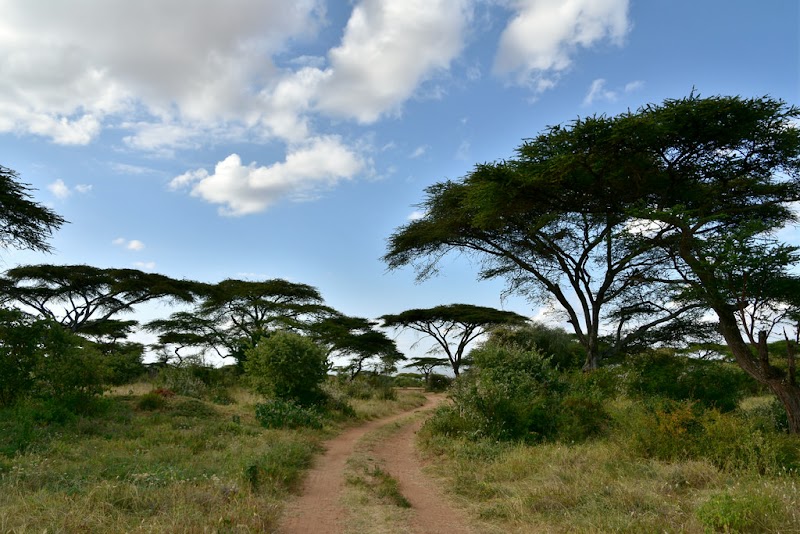
Yabelo Wildlife Sanctuary Adventures
Yabelo Wildlife Sanctuary in Ethiopia is a rich ecological haven known for its unique biodiversity, particularly its population of the endemic Swayne's hartebeest.
Popular Activities
Discovering Yabelo Wildlife Sanctuary: An Avian Paradise in Oromia
As dawn breaks over the rolling hills of Oromia, the Yabelo Wildlife Sanctuary awakens in a gentle embrace of warm light and fresh possibilities. For birdwatchers and nature enthusiasts alike, this sanctuary offers a unique opportunity to observe a splendid array of avian species against a backdrop of lush vegetation and expansive savannahs. This adventure guide leads you into the heart of Yabelo, with practical insights to enhance your experience while ensuring you absorb the breathtaking beauty that surrounds you.
A Mosaic of Habitats Awaits
Yabelo Wildlife Sanctuary spans approximately 1,100 square kilometers, presenting a rich diversity of habitats—from grasslands to wooded areas and wetlands. Here, the landscapes are alive. As you stroll along the well-worn paths, your senses awaken to the whisper of the wind through the acacia trees and the gentle rustle of grasses. The sanctuary is home to over 200 species of birds, including the resplendent Abyssinian ground hornbill with its striking black plumage and vivid red throat pouch.
Timing Your Visit
Timing is essential when planning your birdwatching expedition. The best months to experience the sanctuary's vibrant avifauna are from October to March, during the dry season when migratory birds arrive, enriching the resident species’ repertoire. Early mornings are particularly magical; as night gives way to day, you will hear the soft calls of dawn chorus stirring while the sun bathes the landscape in golden hues.
Prepare for Discovery
To fully immerse yourself in the Yabelo experience, preparation is key. Ensure you arrive with comfortable footwear that can handle diverse terrain, as you'll be traversing grasslands interspersed with rocky outcroppings. Binoculars are a must, as they allow for close encounters with elusive winged creatures high in the canopy or tucked away under brushes. Don’t forget to pack sunscreen and insect repellent, as the African sun can be relentless, and pesky mosquitoes may be lurking by the wetlands.
Navigating the Sanctuary
The sanctuary features a range of well-marked trails that lead you through the most picturesque spots while maintaining accessibility. A moderate trek of about 5 kilometers can take you to an observation point where a panoramic view of the sanctuary unfolds. Here, sit quietly, letting nature’s pulse draw you in—perhaps a team of vibrant lilac-breasted rollers will swoop overhead, or a towering ostrich will stride into your view, embodying the spirit of the wild.
Birdwatching is not just about the catch of a glimpse; it's about the experience. Pause and absorb the rich tapestry of sounds—the croaks of frogs from nearby pools, the chorus of crickets as evening sets in, and the soft rustle of birds taking flight.
Interactions with Wildlife
While exploring Yabelo, remain vigilant and respectful. The sanctuary is home to more than just birds; agile monkeys swing through trees, while various antelope species graze peacefully in the distance. A wildlife sanctuary is a delicate ecosystem, and your presence should reinforce a harmony with nature rather than disturb it.
Engage with Local Guides
To enhance your experience further, consider enlisting the expertise of local guides. These individuals possess invaluable knowledge of the region’s avian species and their behaviors, increasing your chances of spotting rarities. They can also provide insights into local ecosystems, ensuring that you leave the sanctuary with a greater understanding of its ecological significance.
Document Your Journey
Keep a journal or a digital app handy to document your observations. Not only does this keep your memories fresh, but it allows you to track the various species you encounter, and later reflect on the intricacies of your adventure.
Yabelo Wildlife Sanctuary is a realm of discovery, where each bird sighting is a small triumph that contributes to the larger narrative of nature's unparalleled beauty. Setting foot in this avian paradise promises an escape filled with adventure, reflection, and connection to the untamed world. Prepare yourself for an unforgettable journey that invites both the heart and the mind to soar as you explore the wonders of Ethiopia's rich wildlife heritage.
Plan Your Visit
Everything you need to know to prepare for an unforgettable trip to Yabelo Wildlife Sanctuary.
Entrance Requirements
Permits may be required for entry and activities.
Best Time to Visit
Visit between November and February for optimal wildlife viewing and travel conditions.
Visitor Information
Main ranger stations provide information and guidance.
Getting There
Accessible via major roads connecting to regional centers, though road conditions may vary during the wet season.
Weather & Climate
The sanctuary experiences a semi-arid climate with a wet season from March to May and a dry season from November to February, where temperatures can range from 59°F to 86°F.
Conservation Efforts
Threats include habitat degradation, climate change, and poaching. Conservation efforts focus on habitat restoration and species protection.
Camping in Yabelo Wildlife Sanctuary
Find the perfect spot to stay overnight and immerse yourself in the details.
Yabelo Campground
Located near ranger stations providing basic amenities and access to wildlife observation areas.
Top Trails
Trailblazer Tips
Bring binoculars for optimal wildlife viewing.
The dry season, from November to February, offers the best wildlife sighting opportunities.
Guided tours arranged through local agencies can enhance your experience.
High-quality sun protection is essential due to the area's intense sunlight.
